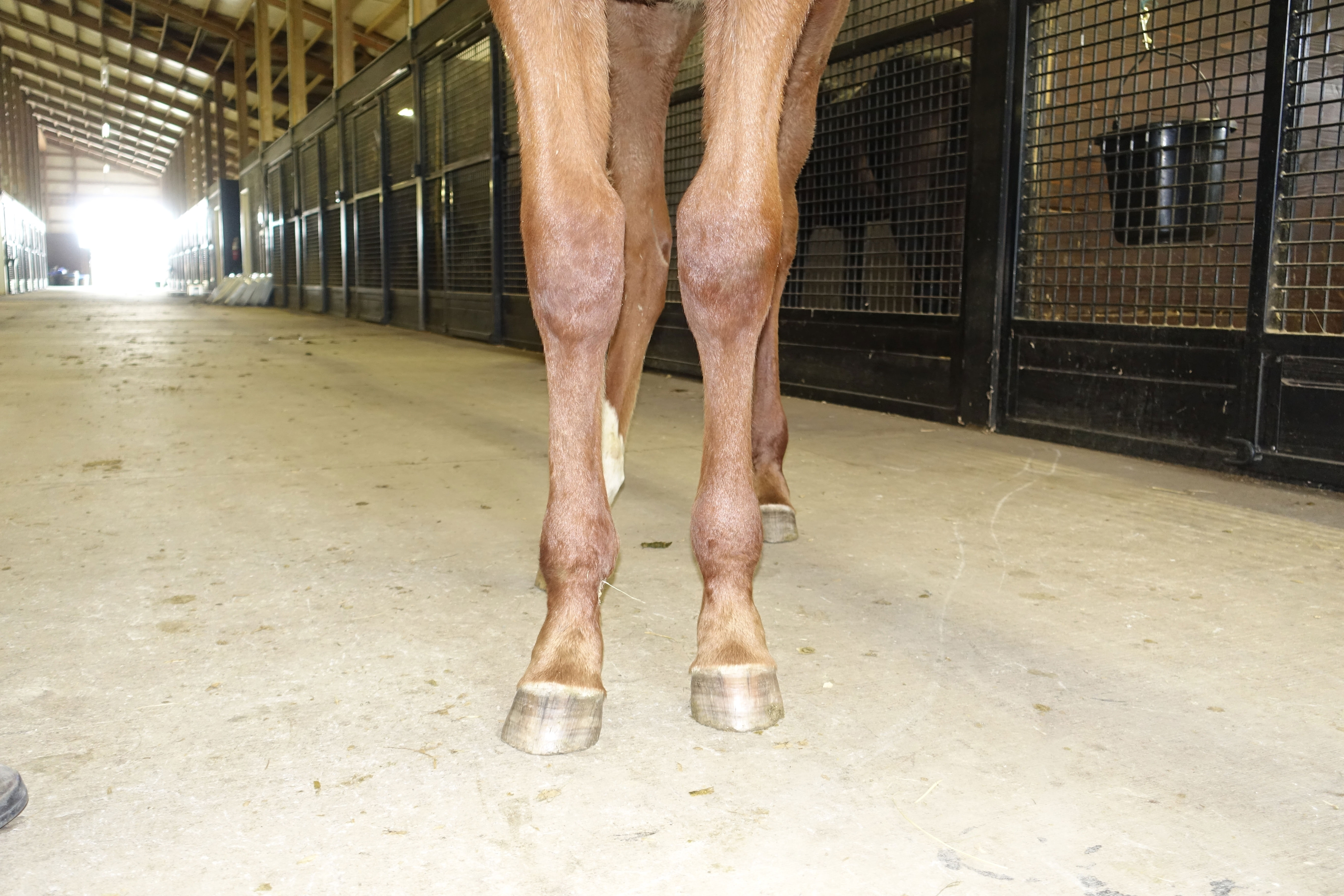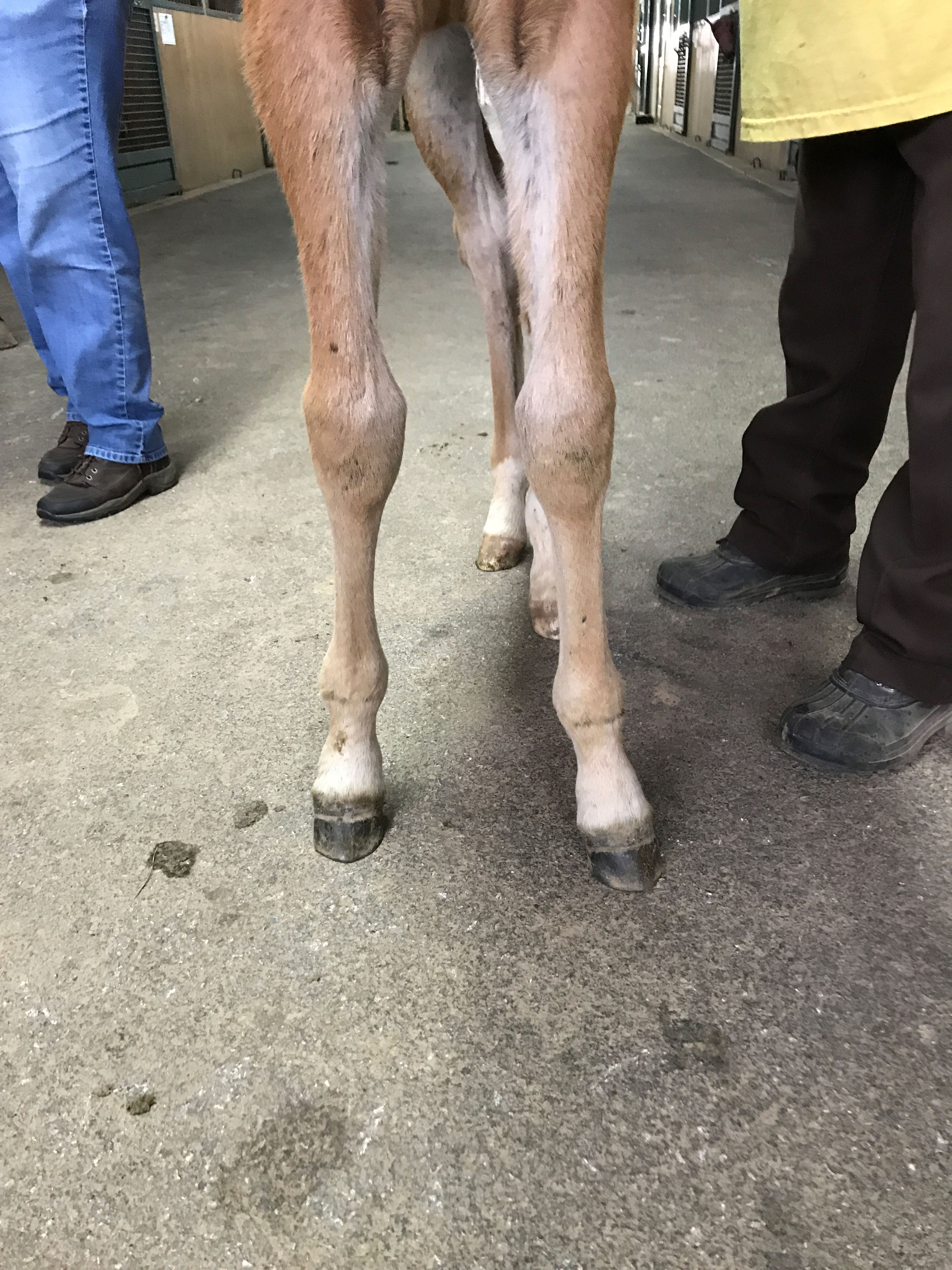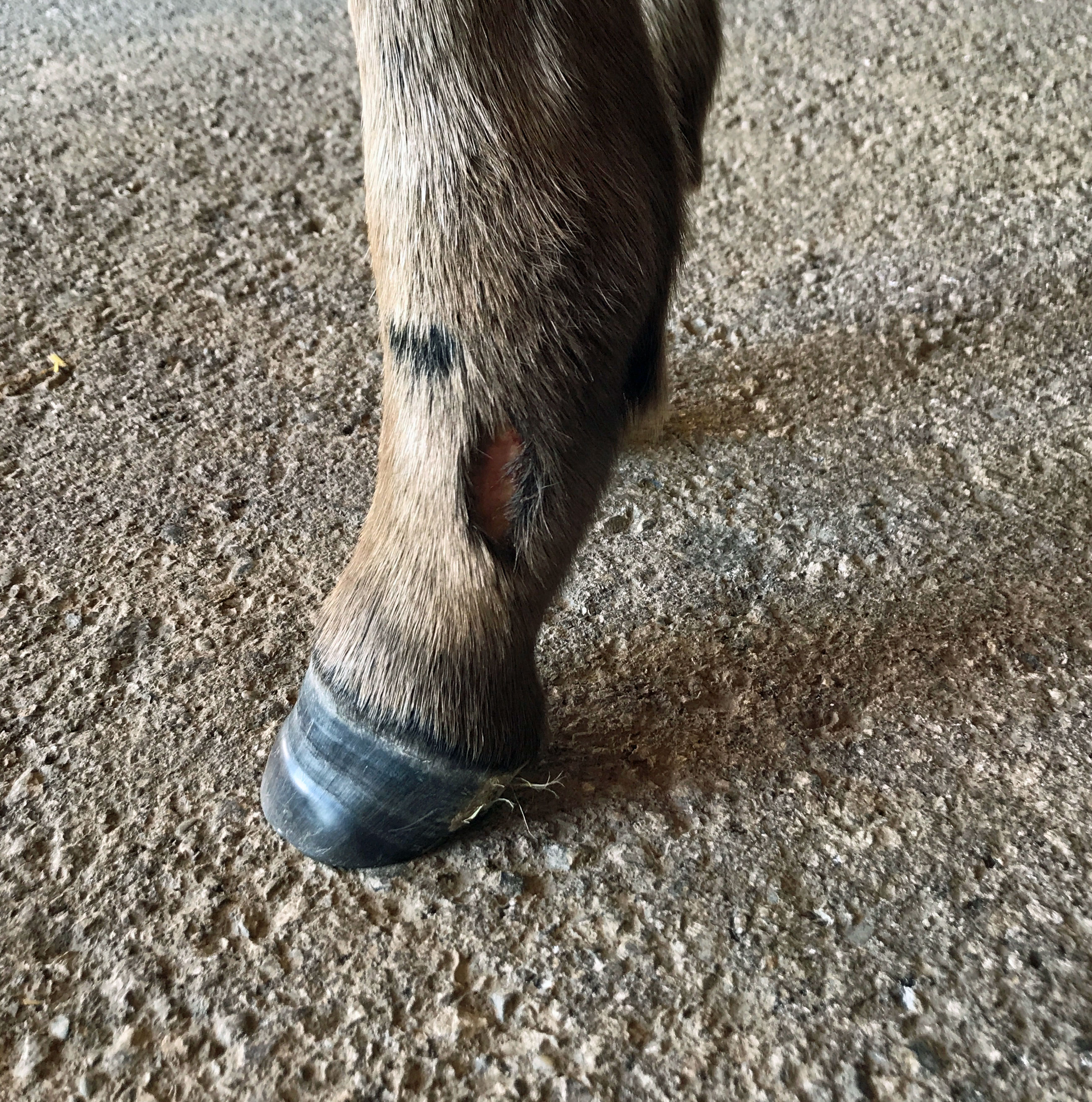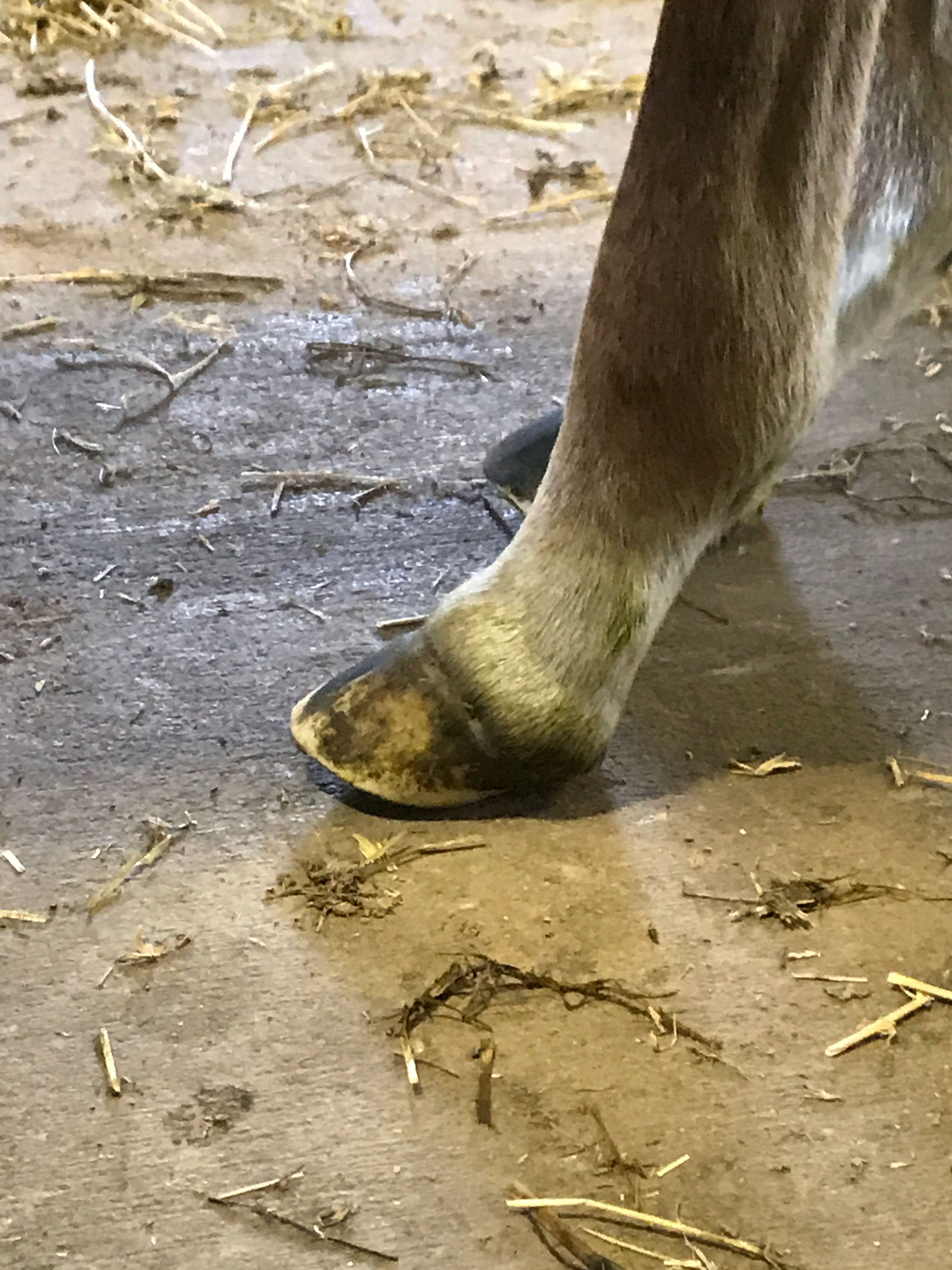With foaling season once again upon us it is a good idea to revisit strategies for conformational corrections. Many issues can arise as a foal develops. These changes can happen very rapidly as a foal’s growth is happening so fast. The first important aspect is regular farrier visits and daily farm inspections. If your farrier comes every 6-8 weeks in foaling season you may be surprised to find yourself in trouble with conformation. I usually start looking at foals when they are 3-4 weeks old and every 3 weeks after that point. The farms I work with are very quick to notice a problem and may start foal trimming earlier than that, although this is a rare circumstance. For most foals 30 days old is a good time to start the trim schedule. At this stage babies evolve so rapidly it could be a mistake to neglect or delay this part of the process. This mistake could, in certain situations, be permanent.

Figure 1 is a foal in mid-stage of development. This foal toes out. Or does it? Notice the outward rotation of the knees and that the feet are in alignment with those knees. This foal is nearly perfect and needs no correction for toeing out. I think it is a common error to try and correct a foal like this. Such a foal requires nothing more than a regular farrier schedule with no corrective trimming.

Figure 2 Is a younger foal which has and outward carpal (knee) rotation but feet that are not in alignment. This foal needs help ASAP by a farrier and possibly a veterinary surgeon. When a foal stands base wide it can have a negative affect on the fetlock development. They might be carpal valgus (knock kneed) outer ration of the knees, or simply vary narrow chested and slower to develop. The effect is the same on the lower joint. If a foal is grounding each step wider than the knees for too long it could create a fetlock varus situation (Figure 3).

If a foal’s fetlock looks like Figure 3, a surgeon should be consulted right away. The longer you wait, the less effective the surgery will be. Wait too long and the surgery will not help because the growth plate at the fetlock has matured. This usually happens about 90-120 days into the foal’s life. At this point, any angular deviation at the fetlock is permanent. Waiting until 90+ days to do fetlock surgery is far less than ideal.

Upright foals, as seen in Figure 4, involve contraction of structure within the leg and if caught early can be treated by a vet with oxytetracycline injections. The foal in Figure 4 is too old for this treatment to be effective and is probably contracted due to a pain response from the injury seen in the same picture. This foal also became fetlock varus during the recovery from that injury. Flaccid deviations are often self-correcting as the foal gets stronger.

Figure 5 is a mild case that would only require a farrier to trim the hoof appropriately. Oddly enough, it is to trim the heel. This will lengthen of base of support for the hoof. Trimming the toe is useless at this point as it doesn’t even contact the ground yet. In severe cases, the back of the fetlock joint can be grounding with each stride and should be addressed with a heel extension shoe.
Awareness, common sense (horse sense, sorry), and regular communication with your vet and farrier (ideally they work together), will keep you out of many conformation problems that could cost far more at the yearling sale than the time spent during early development. Call it "baby steps" to a profitable sale.








Post a comment
Report Abusive Comment